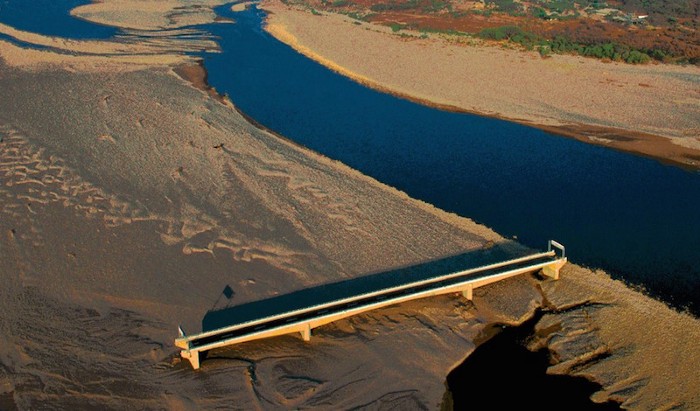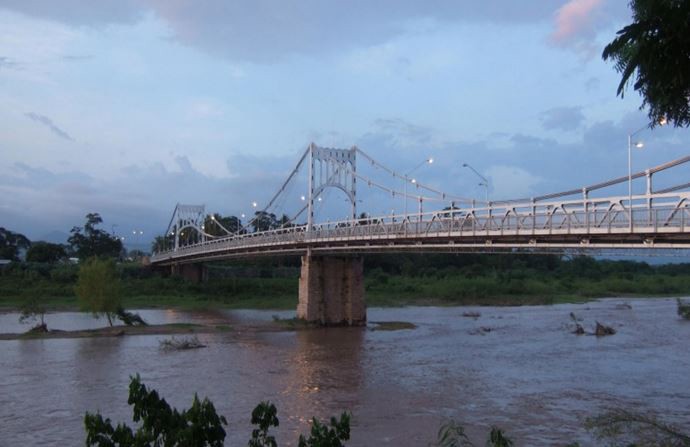If you haven’t heard the story of the Choluteca Bridge in Honduras, you are probably not alone. I hadn’t heard of the bridge until recently, but after hearing the story, it occurred to me that it’s an excellent metaphor for the constantly changing dynamics of markets and business.
The Choluteca Bridge is a suspension bridge located in Choluteca, Honduras. Originally constructed in 1930, the bridge was rebuilt in 1996. The Honduras government, knowing the bridge was likely to face extreme weather conditions, commissioned some of the best architectural minds in the world to build a bridge that could withstand any hurricane. It was state-of-the-art at the time, providing a much-needed access point for the people of Honduras and was built to withstand the high winds and hurricanes that plagued the region.
Sure enough, in 1998, Honduras was hit by Hurricane Mitch, a category 5 storm that devastated the Caribbean. Honduras was wrecked. Roads were wiped out, there was considerable damage to buildings and every other bridge in Honduras was destroyed. However, the Choluteca Bridge stood its ground and survived in near perfect condition.
It was an amazing architectural achievement. Or, at least it should have been.
Even though the bridge stood its ground, there was one problem, the storm caused the river to carve a completely new path which no longer ran under the bridge. That’s right, the Choluteca Bridge no longer stood over the river, rendering it essentially useless.

It is quite remarkable how quickly things can change. Even knowing that a hurricane would eventually hit Honduras, the designers of the bridge were still unable to anticipate future conditions under which the bridge would operate, regardless of how technologically advanced the bridge was at the time. This situation demonstrates how even the simplest of assumptions about the state of the world (the location of the river) may prove to be incorrect. The most successful innovators are able to consider how markets and behaviors will change and invalidate those assumptions.
There are some great examples throughout tech’s history of the river moving from beneath the bridge. IBM was the preeminent technology company in the 80’s until the personal computer came along. The internet and its zero distribution costs disrupted every form of media including print, music, and video. But maybe the best fit for this analogy is Microsoft.
By collaborating with the early hardware manufacturers and embedding its software into their machines, Microsoft became the dominant operating system for over 20 years. The beauty of this business model was how the activities of developers, customers, and PC manufacturers all worked to create further lock in for Windows. Thus, Microsoft became the linchpin in the value chain — the Windows operating system was hardware agnostic, which made switching costs between PC manufacturers low and drove that part of the ecosystem toward commodity pricing. Microsoft held a near monopoly on PC operating systems.
Microsoft built the most successful “bridge” (Windows) in tech over one the largest, fastest growing “rivers” (the PC) in the market, and in doing so had built one of the great defensive moats in the history of business.
Then the internet hit, which dramatically reduced Windows application lock in. More importantly, the mobile wave came, which over time became capable of handling many of the capabilities of the PC but with added benefits such as geo location. As a result, the computing market shifted out from underneath Microsoft and what worked so well in the PC era, did not transfer over to the new paradigm.
What’s more, Microsoft saw it coming but could not predict the forces that would dictate competition in the mobile era. It wasn’t like they had their heads in the sand and dismissed mobile the way Blockbuster dismissed Netfilx. Microsoft, much like the architects who built the Choluteca bridge, recognized the threat and tried hard to build a solution. Microsoft made aggressive plays into mobile going so far as to release their own phone in 2010 and later buying Nokia.
As we all know, it didn’t work. It wasn’t that the people at Microsoft were incompetent or blind to the rising importance of mobile, it was the fact that Microsoft assumed that the dynamics of the mobile market would follow those of the PC market. Under that assumption, why wouldn’t the Windows-centric approach help Microsoft achieve dominance in mobile? And why wouldn’t they? For nearly 3 decades it made everything the company did possible. As Ben Thompson puts it, “Windows had the ecosystem and the lock-in, and provided the foundation for Office and Windows Server, both of which were built with the assumption of Windows at the center.” [1]
The problem wasn’t that they didn’t recognize the threat, it was they were still operating from a Windows centric viewpoint. The real problem was the landscape had shifted and Microsoft was ill equipped and too locked in to Windows to build for that new landscape. I’m sure the Choluteca Bridge architects could sympathize.
Today, Microsoft’s share of the entire computing market, which now includes smart phones, tablets, watches, and other connected devices, is in decline. It’s no surprise that Microsoft’s new CEO Satya Nadella has essentially forsaken Windows and is focused on building new bridges in cloud and services.
Today, Facebook, Apple, Google and Amazon seem unstoppable, much like Microsoft once did, but that’s only because we can’t always anticipate how the tech landscape will morph in the future, just like the bridge designers could not have predicted that the entire river would shift completely beyond the Choluteca Bridge. The best entrepreneurs know how to survey the landscape and see when the river has or is about to move right out from beneath an existing bridge. That’s how startups can compete with and beat established incumbents.
Source: Medium






















 WhatsApp us
WhatsApp us
Pingback: write paper for me